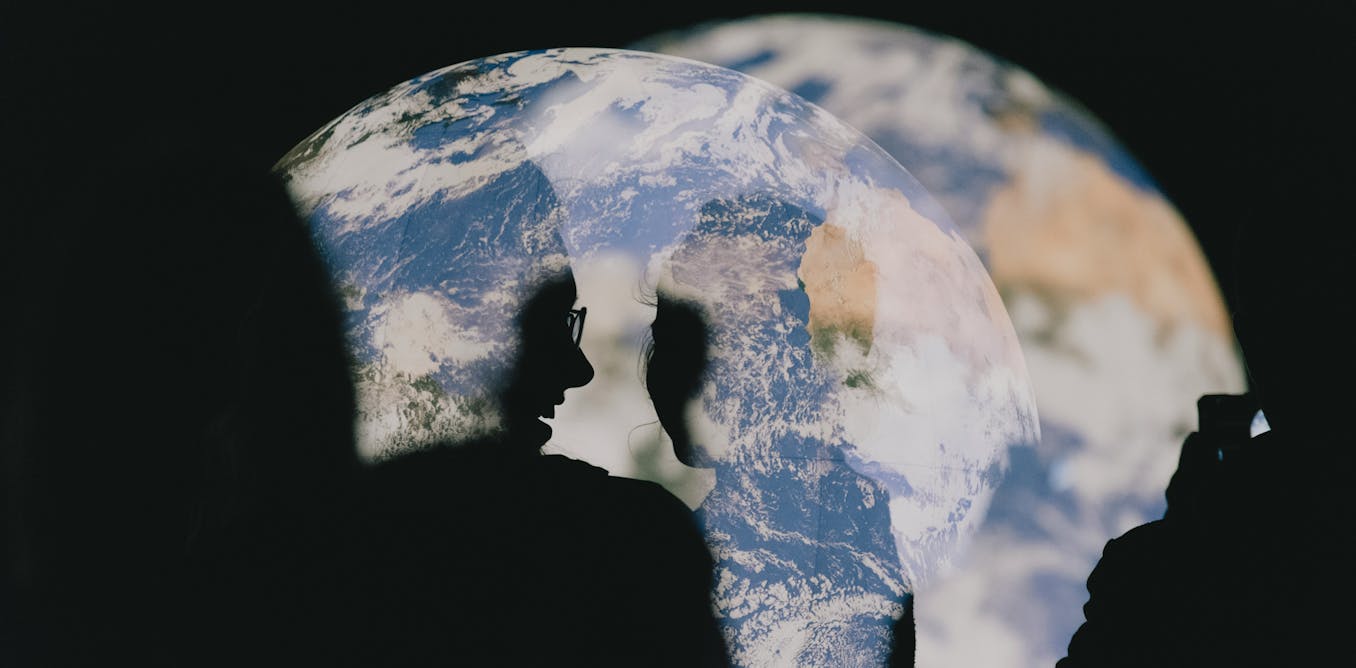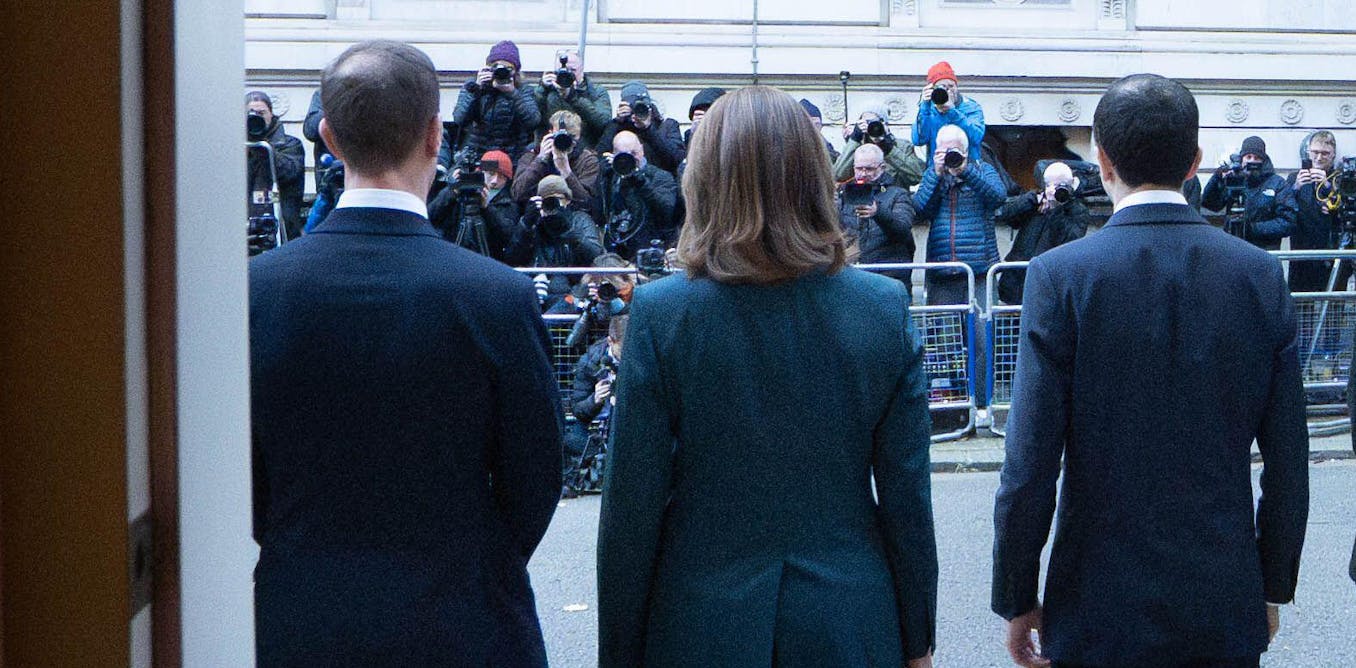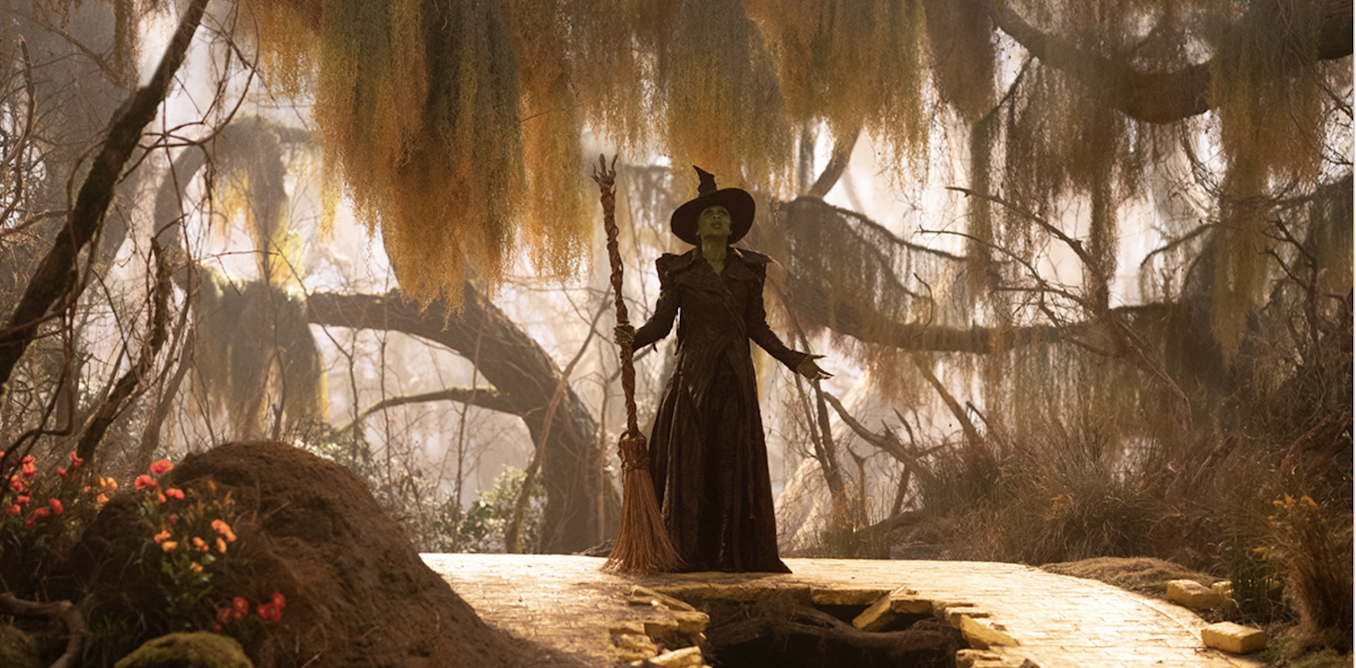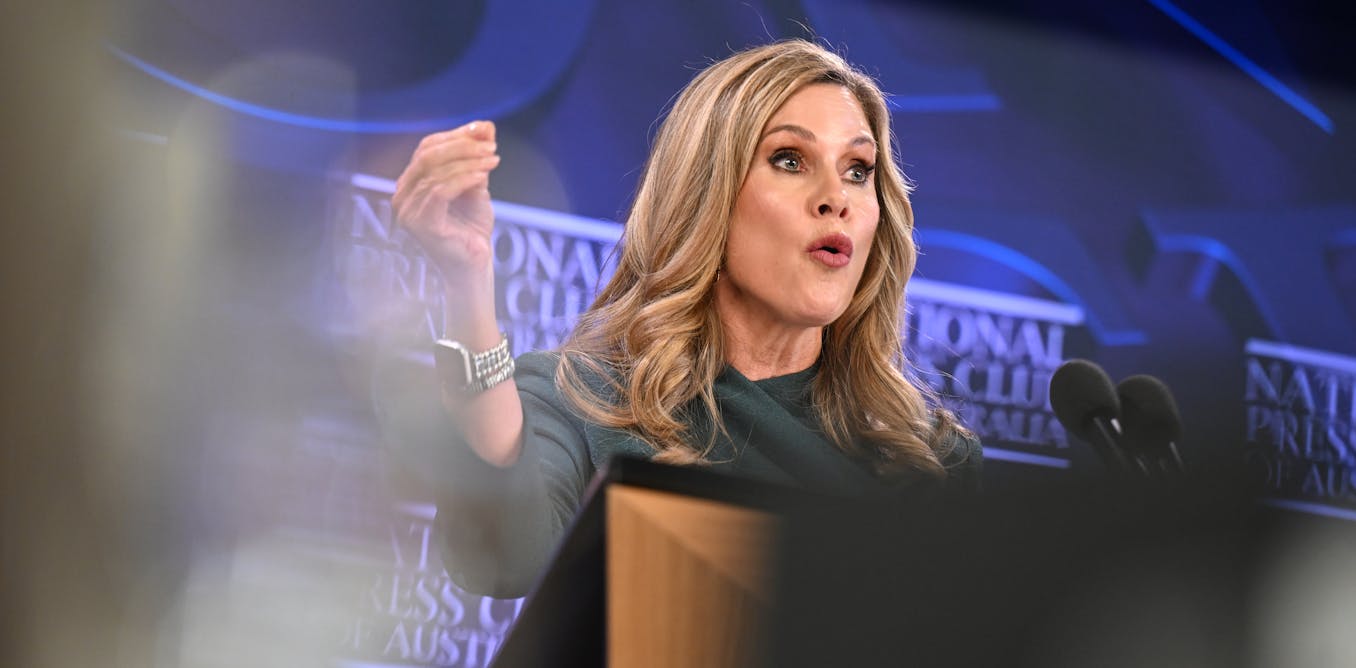You won’t see Ty Dolla $ign’s name in the production credits for Kendrick Lamar’s “Not Like Us.” But without him, the song that this spring put an exclamation point on Lamar’s long-simmering beef with Drake — a jovial but menacing track primarily produced by Mustard, built around a pulsating set of strings — might very well not exist.
Long before Mustard became the top purveyor of Cali bounce, he was a friend and student of Ty’s. They both rolled with a crew called Pu$haz Ink that included artists across disciplines — rappers, singers, graffiti artists, producers and even a few gangsters for good measure. As part of the group’s in-house production squad, Ty would host the crew at his home while he cooked up beats for them. And while he toiled away, the young DJ Mustard steadily documented everything he saw, clocking Ty’s every move to see just how the magic was made. One night, the crew was having a party at a house in Los Angeles’ Baldwin Hills neighborhood when Mustard played the song “Scotty” by Atlanta snap group D4L; Ty still remembers how everyone went crazy and started dancing. He was blown away by the beat’s simplicity, which reminded him of the jerk music then growing in popularity in California.
The next morning, still inspired, Ty started making some new beats. One of his production partners, Chordz, gave him a record to sample that Ty slowed down and pitched perfectly to accentuate the 808s, hi-hat, a snare and a piano sound. The beat became “Toot It & Boot It,” the 2010 debut single for Ty’s Pu$haz Ink peer, the rapper YG — and Ty’s first hit record. But, more importantly, the beat laid the foundation for what became the de facto sound of the West Coast for the next decade, one that Mustard perfected and made his own.
“Mustard [was] always in my ear like, ‘Yo, you got to stop, the sh-t is done, the sh-t is done, stop adding all that sh-t,’ ” Ty remembers today. “I guess it was irritating him so bad that he was like, ‘I’m finna do my own beats. Give me some sounds,’ ” he adds with a laugh. So he did. “The same sounds he’s using, I gave him years ago.”
Ty’s easygoing nature can mask his intense work ethic and deep musical knowledge. But that combination has helped him endure and soar in this industry for more than a decade. In addition to a solo career that has redefined the sound of R&B, he has worked with an astounding number of artists across genres, from 21 Savage to Fifth Harmony to Charli XCX to Post Malone.
“To me, he is someone who is such an ambidextrous player,” says Julie Greenwald, chair/CEO of Atlantic Music Group, where Ty is signed to Atlantic Records. “You could put him in any room, any studio environment, and the guy will always rise to the occasion of making great music. He’s so comfortable in his own skin and with what kind of contributor he is. Ty is that guy who makes great music on his own and makes great music with whoever you put him with.”

That comfort is why Ty didn’t think twice about helping Mustard find his sound. “Mustard brought it to a whole ’nother level,” he says today over Zoom from his house in L.A. At 42, Ty still looks like the baby-faced crooner who first appeared back in 2010. His hair is longer, of course, and he’s a bit heftier, but he still loves blowing trees. As he’s talking, he preps a pile of spliffs to take with him as he runs errands; you get the feeling that Ty’s checklist before leaving the crib is, “Keys, phone, wallet, spliff.” “I tell people when it comes to music, people have already played every single line — there’s just different ways you can do it,” he says. “Mustard just brought it to a whole ’nother level. I’m super proud of what he’s doing, and we’re just setting it up for the next generation.”
These days, the artist born Tyrone William Griffin Jr. has a lot to be proud of. It has taken him a while, but 20 years after starting his first musical group, the R&B duo Ty & Kory, Ty has finally attained the one accolade that had thus far eluded him: a No. 1 as lead artist on the Billboard Hot 100. Earlier this year, his collaborative album with Ye, Vultures 1, topped the Billboard 200, and one of its songs, the uproarious “Carnival,” rose to the Hot 100’s top spot. It was a feat many believed wouldn’t or couldn’t happen — not because either artist lacked the ability to make a No. 1 album or single today (before 2024, Ye already had 10 Billboard 200 No. 1s and four Hot 100 chart-toppers to his name), but because, well, no one really understood why or how the project was happening in the first place.
cnx.cmd.push(function() {
cnx({
settings: {
plugins: {
pmcAtlasMG: {
iabPlcmt: 2,
}
}
},
playerId: “4057afa6-846b-4276-bc63-a9cf3a8aa1ed”,
mediaId: “f1f3afcf-f924-4e31-9fb9-f43444c23f39”,
}).render(“connatix_contextual_player_f1f3afcf-f924-4e31-9fb9-f43444c23f39_1”);
});
By 2022, Ye (the artist formerly known as Kanye West) had ostracized himself from nearly every industry of the many he had participated in, following a ceaseless series of offensive remarks and actions, both in person and on social media. He lost his lucrative sneaker deal with adidas after he made inappropriate sexual comments to employees and following a series of antisemitic remarks he made publicly. He lost his longtime deal with Def Jam Records and Universal Music Group, and high fashion brands like Balenciaga, which Ye once helped find success in the hip-hop world, cut ties with him. The usual Ye redemption cycle — which has historically involved him doing something public and widely considered offensive, then releasing a remarkable piece of art that makes much of the public all but forget the offense — would not work this time. Despite making a public apology on Instagram for his harmful antisemitic comments, it seemed as if Ye had finally crossed the Rubicon and become radioactive.
So when news broke last fall that Ye and Ty were dropping an album together, many fans were perplexed. But the pair’s alignment made sense in multiple ways. The two had worked together many times before: Ty wrote and lent vocals to songs on 2016’s The Life of Pablo (“Real Friends” and “Fade”) and produced and sang on its 2018 follow-up, Ye. Historically, Ye has relied on someone else to help him bring a project across the finish line — Rick Rubin famously helped him assemble what became Yeezus in 2013, and most recently, Mike Dean has been his go-to homestretch guy. On Big Boy’s Neighborhood, a popular L.A.-based radio morning show, Ye explained why Ty was that essential player for Vultures 1. “Mike Dean was the kind of person that you can hand him something and he’ll hand you a finished product back. That’s how Ty is,” he said. “You can give him something, even a murmur, and he’ll bring it back with the words, he can fix all the notes on it, he can bring in the drums, the music.” Today, Ty agrees with his collaborator’s assessment. “I remember Thundercat’s dad [drummer Ron Bruner Sr.] telling me one time that he used to teach his son to be a master of one thing instead of trying to do all the things,” he says. “But what I feel like I was the master at was completing songs — whatever [their] f–king genre.”

As for the why of Vultures 1 — why Ty, a low-key, affable guy who seemingly gets along with everyone, would align himself with someone as caustic as Ye — as Ty sees it, the answer is pretty simple.
“Ye is the best artist of this generation, besides me, and I don’t give a f–k about what people were talking about. I know my n—. He’s one of the best people I’ve ever met,” he says. Ty also shrugs off the notion that he might have feared the album would perform poorly because everyone else thought Ye’s musical career was over. “Just with my analysis of how it goes with him, he goes all the way to the top. And something may happen and he’ll say [something people find offensive] — and then people [get] right back, you know. Because this sh-t is undeniable.”
The “how” of Vultures 1 is a bit more complicated.
Coming off his 2023 single “Motion,” a Chris Brown-featuring track heavily inspired by South African amapiano music, Ty wanted his next album to reflect the sounds he has loved while traveling. When Ty ran into Ye at a club in Tokyo in the spring of 2023, he was just starting work on the project, and he asked Ye to executive-produce. Ye agreed, and the two started working on music together the very next day. Ye’s involvement moved the music away from the Black diasporic and house and club influences that Ty was experimenting with — and marked the genesis of Vultures 1.
Ty already had a bunch of songs in the can that he says he started right where we’re sitting a few weeks before our Zoom, in his studio in downtown Hollywood. He has had this space for just about a year, and a remodeling is ongoing; the only signs that a major hit-maker owns the spot are the vintage cars parked in the back in various states of restoration and the collection of rare synths and keyboards usually housed in the main studio.
Despite its current appearance, this is where Ty feels most at home creating. The freedom he has here led to the experimentation that yielded “Burn” — probably the warmest, most soulful track on Vultures 1. “The ‘Burn’ that I brought [Ye] was a completely different song. It had a whole different beat. A whole different direction,” Ty remembers. “He took it, loved it, stripped it down, redid the beat, and we got ‘Burn’ — and it’s the second-biggest streaming song on Vultures.”

That’s pretty much how the entire album went: Ty would bring Ye a track, and the two would then deconstruct it and build it back up — a laborious, time-intensive undertaking, especially amid the globe-trotting the two did while making the project. Largely at Ye’s behest, Vultures 1 was recorded in Las Vegas, Miami, Los Angeles, Japan, Italy, Saudi Arabia and Dubai, United Arab Emirates. In trademark Ye fashion — he famously recorded Watch the Throne with Jay-Z between European castles and the Mercer hotel in New York — the duo set up in wildly varying locales at each stop.
“Japan was hotel rooms, Italy was hotel rooms. Then we got Sting to let us use his [Italian] villa,” Ty says. “At first we were just recording in the living room, recording by the pool, setting up recording equipment out there, and then we found out that there’s an actual recording studio there,” he adds with a laugh. In Dubai, Ye and Ty took over an empty building in a hotel complex and built a bunch of makeshift studios throughout it. That’s where they made “Do it,” the YG and Nipsey Hussle-featuring track that sounds like a baroque strip club anthem. “It’s a very expensive album, I will say that,” Ty admits. “It would make for a crazy documentary.” (Ty has footage of some of the songs being made, but probably not enough for a movie, he allows.)
The Ye and Ty world tour of sorts was, Ty says now, nothing new for him: “I’ve always done that. All of my songs; all of my albums — traveling everywhere, laptop, mic, speakers. I’ve done music that way ever since you could make music that way.” But he got his start much more traditionally. Born in South Central L.A., Ty was raised in a musical home. His father, Tyrone Griffin Sr., was a session musician who played all over L.A., sitting in with acts ranging from rap royalty (2Pac and Snoop Dogg) to R&B rising stars (Immature) and the legendary funk band Lakeside (best known for the 1981 hit “Fantastic Voyage,” sampled by Coolio on his track of the same name).
Griffin Sr. and Ty’s mother, a real estate agent, separated when Ty was young, and he stayed with his mom while his older brother went to live with his dad — but Sr. left a lasting impression on Jr., who had started fiddling with his dad’s instruments before he could talk and later amassed his own collection at his mom’s place. (Today, Ty can play a multitude of instruments by ear, including the drums, keyboard and guitar.) When Ty started making beats as a 12-year-old, he would use two cassette tapes to make his own loops. Realizing that method’s inefficiency, Griffin Sr. bought his son his first MPC and set him on his way.
Listening to the ambrosial blend of ’90s R&B, G-Funk and rap that constitutes Ty’s solo catalog today, it’s easy to hear his musical DNA and the complementary influences of his funk musician dad and the gangsta rap that dominated the airwaves of his youth. Both powered Ty’s fresh vision for what popular Black music could be.

In the early 2000s, Ty worked to fine-tune that vision — and the world got its first glimpse of what he had in mind with Free TC, his 2015 debut studio album dedicated to his incarcerated brother, Jabreal Muhammad. (The project’s title references Muhammad, nicknamed Big TC, who has been serving a life sentence since 2004 for a murder he says he didn’t commit.) At the time, most fans knew Ty from “Toot It & Boot It” and his Beach House mixtapes and EP, which birthed his first top 40 hit, “Paranoid.”
Those songs were good and catchy but belied Ty’s true musical dexterity, revealed more wholly on Free TC. Thanks to his songwriting and production résumé by that point, Ty was able to call on a stunning list of heavy-hitter guest stars for his debut — Lamar, Ye, Future, Brandy, Wiz Khalifa and Babyface, among many others. Combining classic R&B melodies and styles with modern rap energy, he melded the two worlds in a way few had successfully done before. Think Future, if he could sing traditionally well, produce and play instruments, and you start to scratch the surface of Ty’s capabilities.
“[When we signed Ty in 2012] R&B was in kind of an uncool space. He was, like, bringing it into the future with his songwriting, with his production, with his melodies, the way he was approaching songs,” recalls former Atlantic A&R executive Shawn Barron, who signed Ty to the label after hearing some of his early music. “It was just all so new. And I feel like really he’s the forefather of the R&B that we hear today.”

In person, Ty is usually humble. When prodded about his influence over modern R&B, he impishly acknowledges some similarities between what he has done and the R&B currently dominating the charts. But when it comes to his love of the genre, he’s unabashed.
“I love R&B. You see outside [the studio], I got my 1964 Chevy Impala on chrome spokes. When I’m in that I’m listening to old R&B — you know, love songs and that vibe that just fits the car because it’s the time,” he says, putting his spliff down to indicate how much he means what he says. He’s just as fulsome when it comes to giving props to R&B’s newer stars. “I love SZA. Chris Brown is a legend — he’s like, The One. I love Bryson Tiller and what he just dropped. Brent [Faiyaz] is hard. There’s so many people I can name… Coco Jones, as far as like, the new ones coming out. Yeah, she’s killing it. Tyla. There’s a lot of dope R&B right now.”
He trails off a bit and then blurts out one more name: “Leon Thomas!” A 30-year-old, New York-raised singer/songwriter/multi-instrumentalist, Thomas earned a modicum of fame as a kid actor on Nickelodeon’s Victorious. A former member of the Rascals songwriting and producing crew, Thomas went on to write and produce for Babyface, Drake and Ye. But his biggest placement came in 2022 when he co-wrote SZA’s “Snooze,” the song that would win him his first Grammy. And if it’s up to Ty, Thomas will become a household name soon: He’s the first signee to Ty’s label, EZMNY Records.
“When he took a liking to my music, one thing I noticed is that he always respected what I did as a live musician and never really wanted to change me into something quote unquote more palatable. He really respected who I was truly as a human being and as an artist,” Thomas says. “We’re doing our best to garner the best numbers we can get. But I love the fact that he’s investing in someone like myself who’s really focused on doing my best to make art and to stay true to being a musician.”

Making the music that inspires the next generation of R&B artists is one thing; taking charge of the career of one of that generation’s most promising artists is another entirely, especially for someone like Ty who has made a career out of following his own creative north star and rarely having to make tough compromises. But Barron, Ty’s partner in EZMNY, believes he’s actually the perfect person to lead a label. The two started EZMNY in 2022 as a place to showcase what they consider to be real music. “I just want to find the best artists on the planet,” Ty explains. “To me, it’s like, ‘OK, popularity is one thing, all that sh-t that a lot of people look for, how many streams did they do? How many followers do they have?’ [But] I wasn’t worried about that. Because I know that’s not what it takes. That’s one thing to figure out. But you got to be good in order to last now.”
“Ty’s a great artist, and I feel like he knows certain things that it took for him to get where he needed to be on certain things that I don’t even know,” Barron says. “I feel like he takes those thoughts and actions [on the artist side] and he brings them over to being a label executive. And he’s very artist-friendly. He’s able to describe and break down things that may be confusing to some people because he has been through it already.”
As he launched his own label and traveled the globe making an album with one of the most famous/infamous artists on the planet, Ty was also confronting personal news that seems to still surprise him: His 19-year-old daughter, Jailynn, aspires to follow in her father’s footsteps and make music, too. “She came to me the other day, and was like, ‘Dad, I want to record one record.’ I’m like, ‘What you want to do, rap or sing?’ She’s like, ‘I want to sing on my art.’ So she just made one song. It’s hard. And she’s going to keep on going.” He jokes that Ye’s oldest daughter, North, must have inspired Jailynn after North’s fan-favorite verse on Vultures 1’s “Back to Me.” “I’m like, ‘Wow, I really never heard you sing before.’ [Jailynn] really just never sung in front of me,” he recalls. “And she told me she didn’t want to do music. She was playing basketball.”
His own solo project — the one he intended to focus on when that first fateful meeting with Ye happened in Japan — will have to wait: Now he has a trilogy to finish. Today, in his main studio room, he plays music, some of which he says is from Vultures 2. As Ty tells it, the album is almost done and could be released any day now. (The album art features a masked Ty holding a portrait of his incarcerated brother, Muhammad.) As with Vultures 1, his label may well be among the last to find out, which Greenwald says isn’t a problem: “He has earned that right with us. When he calls to say, ‘I made a project, it’s coming out,’ we always say, ‘Listen, this is your name and we got you.’ ”
When asked about the rumors that he and Ye will circumvent streaming platforms and sell the album directly to fans, Ty replies, “Why not? Switch it up. He’s always got something up his sleeve. I always got some[thing] up my sleeve.” To Ty, the album’s distribution comes second to the music. He’ll let Ye worry about the marketing and distribution. His focus, as he works with an artist he believes has unlimited creative potential, is to get the rest of this trilogy out into the world — just like he has always done.
“We got all the songs. Basically, it’s just like, ‘How can we get it there? How can we go bigger than the first album?’ ” Ty says, clearly amped. He won’t say it explicitly, but it’s within reason that, as we’re speaking, he’s trying to piece together the puzzle that will become Vultures 2. After all, that’s why Ye — and everyone else — loves working with Ty. He can do anything and everything. But unless the album makes fans move and adds something new to music — something that has never been attempted before — then to him, it’s not done. “Certain people will probably expect you to just do the same exact sound,” he says. “But that sound’s already out.”

This story will appear in the June 22, 2024, issue of Billboard.

The post “The ‘Master’: How Ty Dolla $ign Changed R&B and Hip-Hop — and Got Ye to Finish ‘Vultures 1’” by Damien Scott was published on 06/20/2024 by www.billboard.com







































